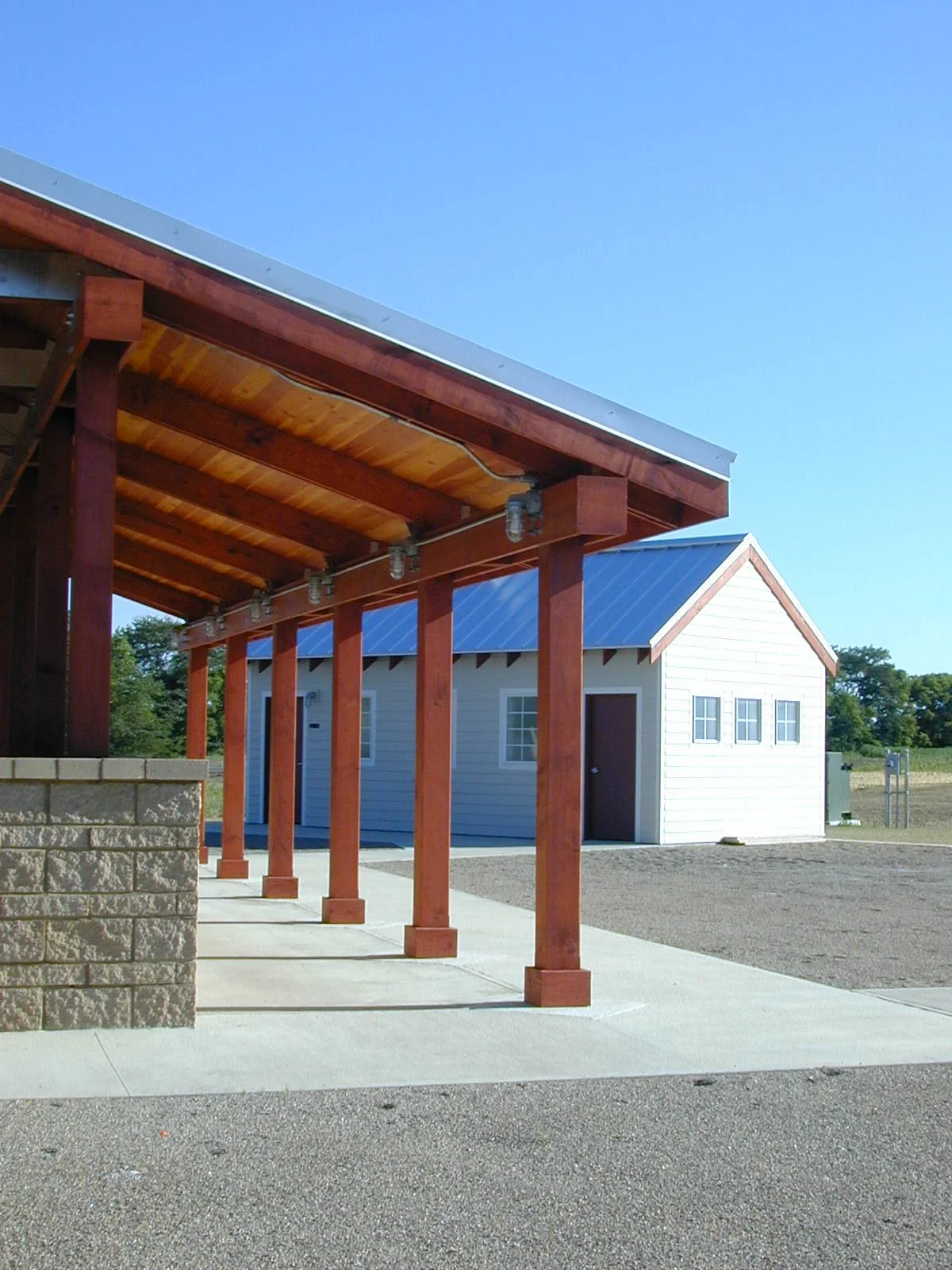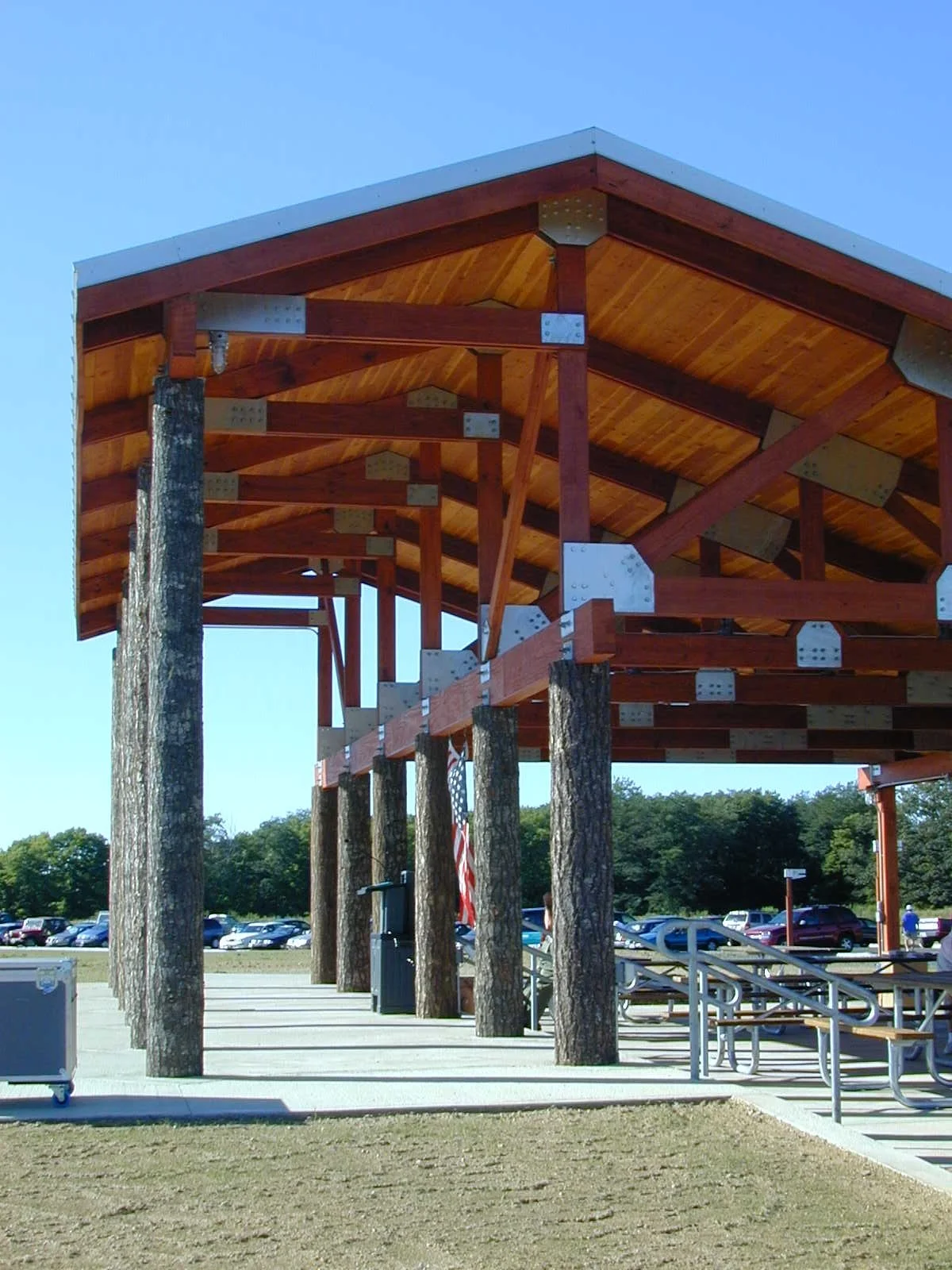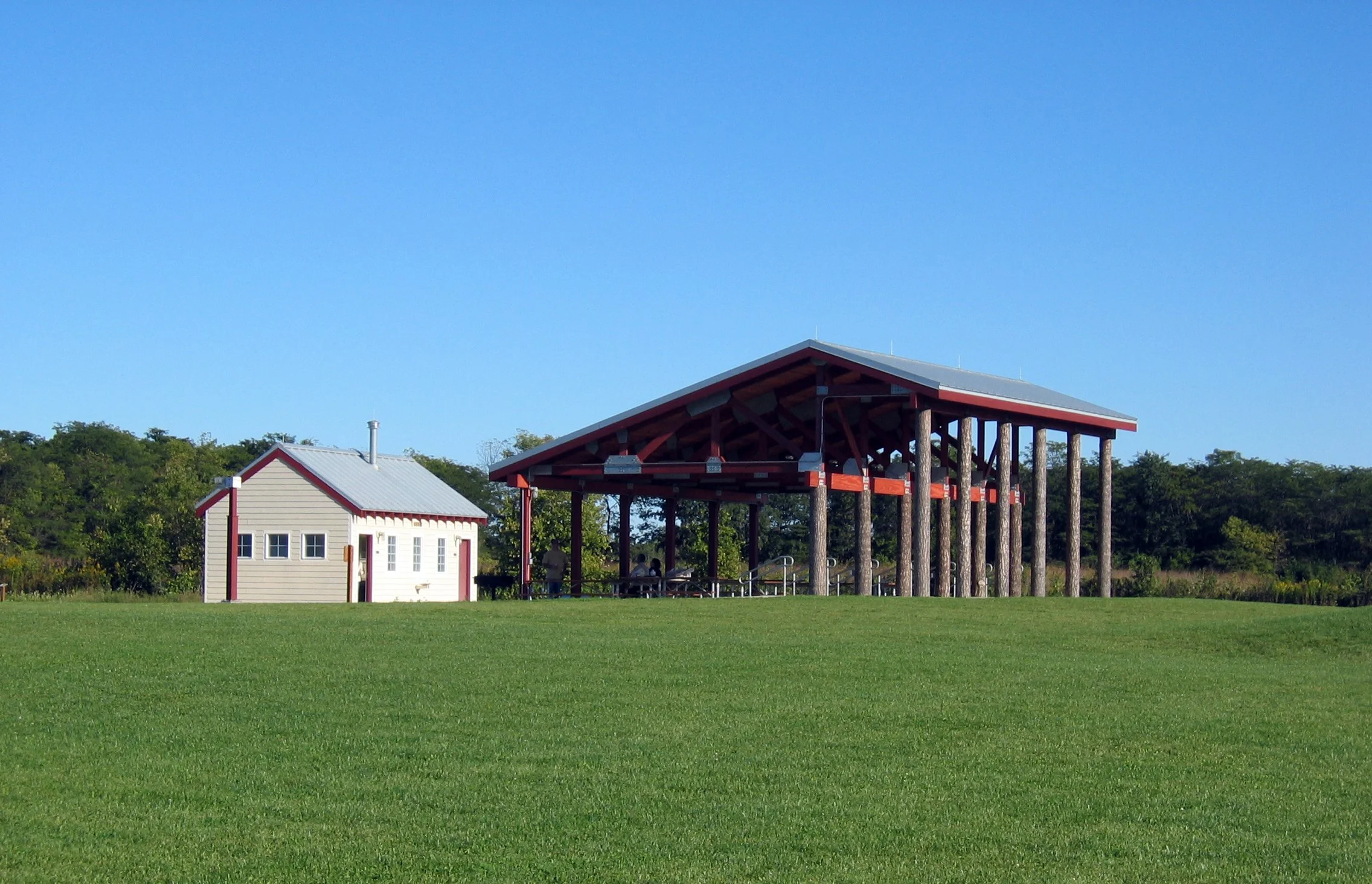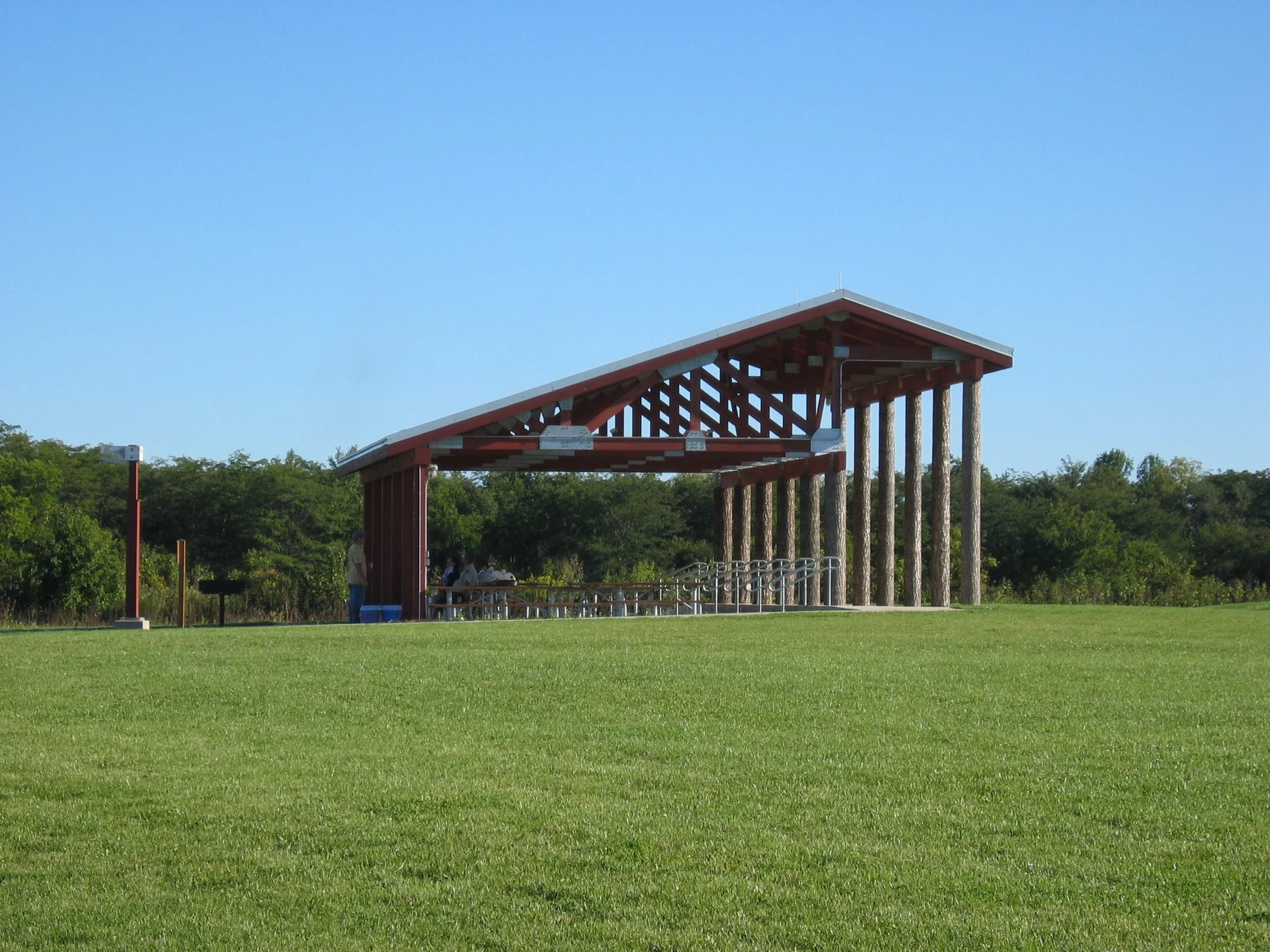PRAIRIE OAKS METRO PARK
To establish an architectural identity for Columbus's west side metro park that honors the site's prairie heritage while pioneering sustainable infrastructure solutions that elevate the visitor experience and minimize environmental impact.
-
Our design team developed a cohesive architectural language rooted in historical prairie aesthetics while incorporating forward-thinking sustainability principles. The structures employ material selections and formal elements that reference regional vernacular architecture, creating an authentic sense of place that resonates with the park's natural setting.
The centerpiece of our solution is an innovative restroom facility featuring a natural composting waste management system — a radical departure from conventional infrastructure approaches. This system dramatically reduces water consumption and eliminates harmful chemicals from the site's ecosystem. The facility's design thoughtfully integrates with surrounding landforms, using passive ventilation and daylighting strategies to minimize energy requirements while maximizing user comfort.
Throughout the park, our architectural interventions maintain a consistent visual vocabulary that helps visitors intuitively navigate the space while deepening their connection to the prairie landscape. Each structure was strategically positioned to frame significant views and create meaningful transitions between different ecological zones.
-
Columbus, OH
-
2002
-
Community






